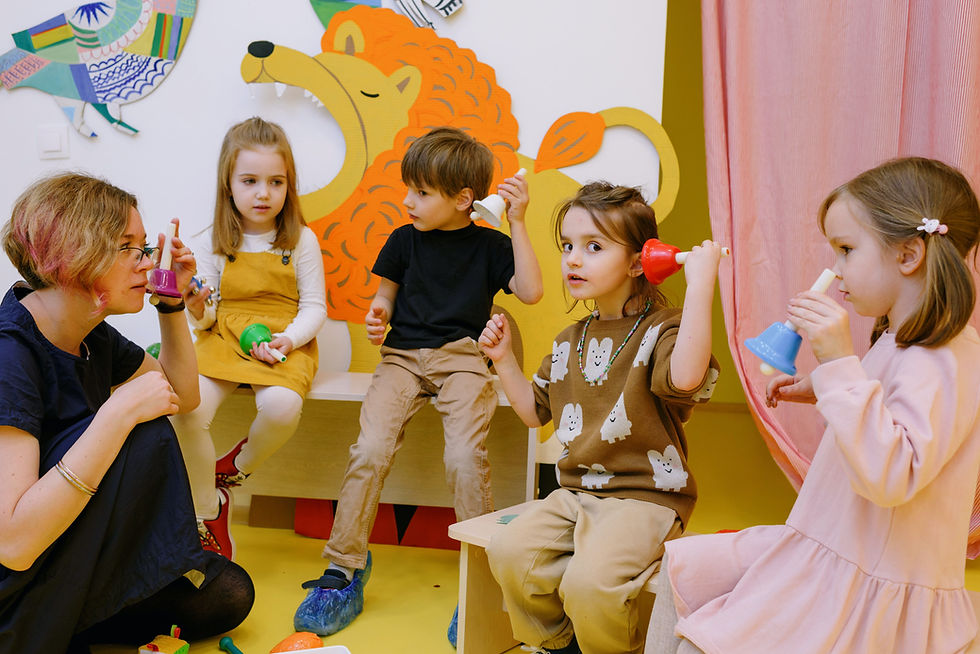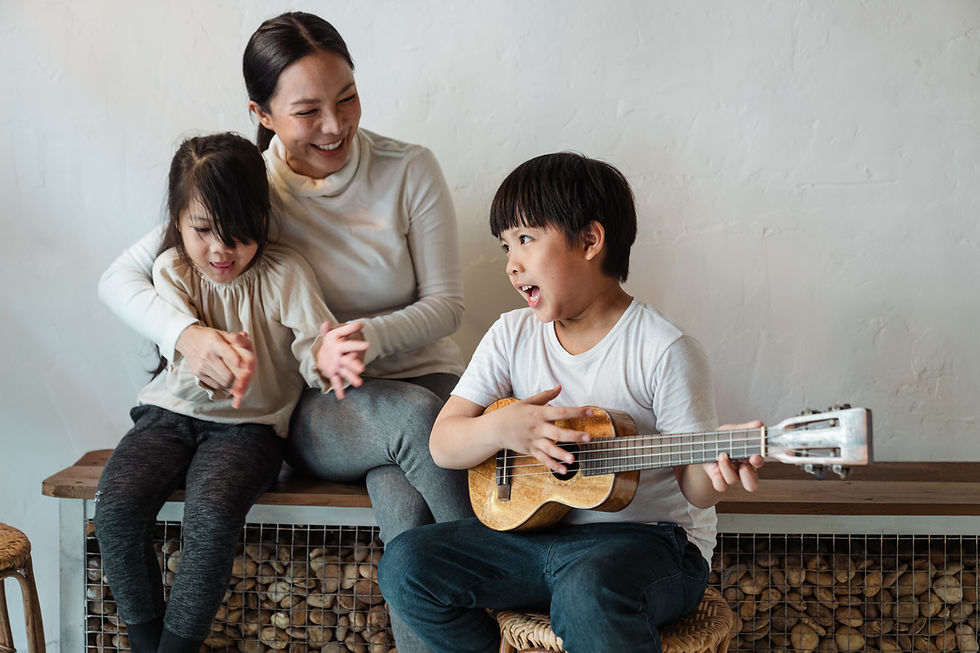Learn Mandarin through Singing
- DADI Mandarin
- Apr 21, 2022
- 4 min read

Music - a pattern of sounds can help to relax children and get them in a good “headspace” for learning something new. It can provide the ideal backdrop for children to focus on picking up new skills, including learning Chinese.
How can music help children learn Chinese?
Music helps us to concentrate by blocking out distracting noise. It acts as a stimulus that engages the brain, which positivity modifies mood and provides a rhythm that keeps us alert. This makes the task at hand more engaging, less dull, and easier to concentrate on.
Music can also increase the brain's production of the feel-good hormone, dopamine. In the brain, this increased production of dopamine will help many children (including those with ADHD and other learning differences) to focus and study more effectively. Music and specifically songs in Mandarin can also be a great tool for children to learn Chinese.
A song provides an emotional link between the music and the listener. Singing along gives children different ways to express their feelings. With the aid of music, the rhythm of the lyrics helps children memorise it with less effort and keep it longer in memory. This is especially beneficial for Chinese learning since it requires a lot of memorisation.
Mandarin children songs as a learning resource for building Chinese vocabulary
Music is especially helpful for language learning as it makes words more memorable. Lyrics of the children’s songs are usually short and simple, composed of common expressions, everyday language, and descriptive words. Children’s songs are great for language learning, particularly for young children. There are three key points to consider why Mandarin songs and music are great tools for Mandarin learning:
1) Listening skills
Children should be guided in studying the lyrics of the song. They should be helped with reading through them, guessing and finding out the meaning behind the lyrics. Listen to recordings of the song with children and if there are any videos on Youtube, those can add extra interest in the song. After going through the lyrics, children should be developing their listening skills and also understand what the song is about and therefore learn extra vocabulary. For those parents that don’t speak Chinese but would like their child to, songs are a very helpful tool and usually free and easy to access online.
2) Vocabulary
Song lyrics are rich in vocabulary for children to learn. Many Mandarin songs include vocabulary with various useful topics, for example, body parts in “两只老虎”, numbers in “五指歌“, holidays and events in “祝你生日快乐” and “祝你圣诞快乐“, emotions and feelings in “如果你快乐”, and many more. There are also Chinese children’s songs about animals, actions, food, earth, friendship, the variety is endless. Learning Mandarin children’s songs is a great way to learn core basics in the language.
3) Fluency
The easy rhythm of a good Mandarin children’s song makes it stay in a child’s head for days. It’s quite common to observe a child singing the same song again and again for a period of time after he or she has learnt it. Repetition helps children to memorise words and phrases, which leads to an improvement of their fluency.

How to maximise the benefits of learning Mandarin through Mandarin children’s songs
1) Teach the key words / phrases / sentences
Every song has a topic. The keywords/phrases/sentences are worth mastering. Teaching children beforehand the keywords, phrases and sentences can help them better understand the meaning of the song.
2) Add movements when singing the song
Lyrics can be taught line by line. At certain points, movement can be added to enhance understanding and memorisation. Even simple movements such as clapping of hands or stamping of feet can add extra emphasis to the meaning of the song but also keep children engaged. This further enforces the emotional links to the song.
3) Sing along with the song and the singer
The next step is to sing along to a recorded version of the whole song. The song sung by the singer reminds the learner of the words or can give cues in case they are forgotten.
4) Just you and the music
Once a child feels familiar with singing along to the song with a singer singing the lyrics as their guide, the next step is to encourage children to try to sing the song with just the music as the accompaniment. This will really show how well they have memorised the song and the words.
5) Level up – write your own song!
Most of the time, teaching a song and its lyrics to children stops when they can sing the song independent of any guidance apart from the music or even singing the song on their own. However, why not level up and work on making your own little song using the vocabulary you have taught. Encourage children’s creativity and confidence by creating together your own version of a song.
Singing Mandarin songs are a part of the curriculum at Dadi Mandarin. We understand that our students need to enjoy learning for the maximum results. We welcome any enquiries about how we teach Mandarin at Dadi Mandarin.
If you enjoyed this article you might also enjoy reading this you may also be interested in reading Happy Students Learn Faster.
Developed for Dadi Mandarin and written by WOI.



Comments